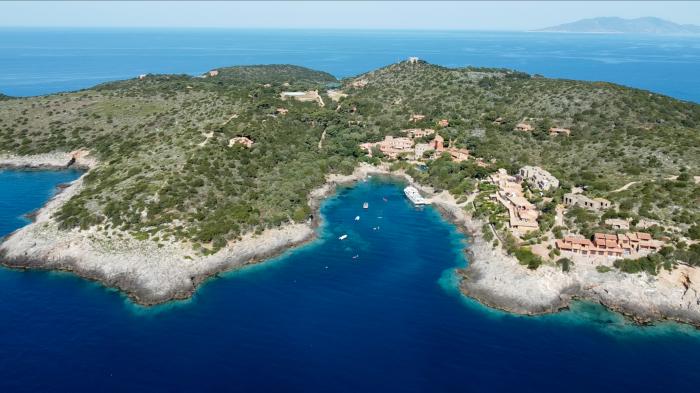
Island facts
Giannutri is a small Italian island located in the Tyrrhenian Sea off the coast of Tuscany. It is the southernmost island of this archipelago. The island and its nearby marine areas fall under the Arcipelago Toscano National Park and Marine Sanctuary. Predominantly privately owned, certain sections belong to Italy’s Ministry of the Environment, participating in the Coastal Area Management Programme authorized by the Ministry.
Assessing renewable energy is a fundamental step towards the energy transition, as the island is heavily dependent on fossil fuels. Considering the low photovoltaic capacity per person, the investigation of possible new installations is necessary to increase the sustainability of the islands. Furthermore, in parallel to the investigation of RES, grid stability also needs to be investigated to enable a gradual RES penetration of the electricity mix, but also to couple them efficiently with the storage facility. Italian islands are facing a complex dilemma: the UE and Italian policies are pushing towards renewable energy, but at the same time every investment in renewable energy has been stopped due to a lack of authorisation at the National or Regional Level.
Giannutri needs assistance to tackle this issue and solve this dilemma, also because they are beneficiaries of the “Green Island” program of the Next Generation UE program.
At the same time, Giannutri is interested in the marine transport transition, with the support of Maregiglio S.r.l., one of the two shipping companies servicing the island. The island aims at shifting marine transportation to green energy (hydrogen or bio-fuel ships), but the entire harbour logistics need an overhaul. For instance, there are currently no hydrogen distribution pipelines.
As part of the 30 for 2030 call the following activities are planned:
The first activity is a feasibility study for the use of hydrogen and biofuels in hybrid ferries. This study will evaluate the feasibility and financing options for converting existing hybrid ferries to utilize hydrogen and biofuels. It will also address the necessary adaptations to the infrastructure and examine the supply chain for these fuels, ensuring that all logistical considerations are accounted for.
The second activity involves reviewing the draft Comprehensive Economic and Trade Agreement (CETA) that the MOREnergy Lab will develop. This review will ensure that the draft aligns with the objectives and requirements of the stakeholders involved.
The third activity focuses on creating a feasibility study for renewable energy sources (RES). This will involve developing technical plans for the deployment of renewable energy as identified in the CETA, ensuring that the plans are actionable and aligned with regulatory standards.
Finally, a grid integration and storage study will be conducted, although the specific details of this study are yet to be defined and will depend on input from the distribution system operator (DSO). This study will be crucial for understanding how to effectively integrate renewable energy into the existing grid while ensuring adequate storage solutions are in place.
Please note that the island of Giannutri has jointly applied for the 30 for 2030 call with Giglio Island | Clean energy for EU islands (europa.eu).
